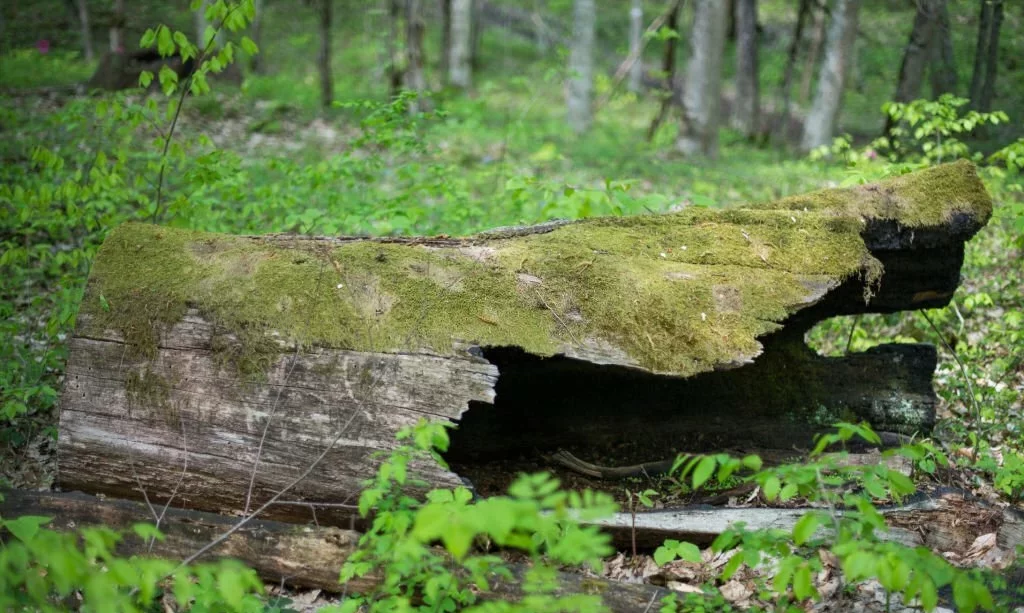Hollowed-out logs, with their rustic charm and natural aesthetics, have long been favored for various DIY projects and decorative purposes. Whether you’re a seasoned woodworker or a beginner in the world of woodworking, the art of hollowing out logs opens up a world of creative possibilities. In this article, we will explore the fascinating process of transforming a solid log into a hollowed masterpiece. Hollowed logs can be repurposed for a range of projects, from planters and storage solutions to unique art pieces, making it a skill worth learning. Understanding the techniques involved in hollowing logs will empower you to embark on creative endeavors that blend the beauty of nature with your craftsmanship.
Choosing the Right Log
Before you embark on the journey of hollowing out a log, it’s essential to select the right log for your project. The choice of log will significantly influence the final result. Here are the key considerations when choosing a log:
1. Size and Shape: The dimensions and shape of the log should align with your intended use. For smaller projects like planters, select logs with a diameter and length that match your design. Larger logs can be used for furniture or storage.
2. Wood Type: Different wood types offer distinct appearances and properties. Hardwoods like oak and maple are durable and create a polished finish, while softer woods like pine or cedar may have a more rustic appeal. Choose the wood type that complements your project’s aesthetic and functionality.
3. Decay and Infestation: Inspect the log for signs of decay or infestation. A healthy log is the foundation for a successful project. Ensure there are no soft or rotting areas, and be cautious of insect holes or other indications of infestation.
Tools and Materials
Hollowing out a log requires a set of tools and materials to ensure a smooth and safe process. Here is an overview of what you’ll need:
1. Chainsaw: A chainsaw is essential for making the initial cuts and creating the cavity within the log. Choose a chainsaw with an appropriate bar length for the size of your log.
2. Chisels and Gouges: These hand tools are used to refine the shape and depth of the hollowed log. Chisels with various sizes and shapes can help you achieve precision in your project.
3. Safety Equipment: Safety goggles, gloves, and hearing protection are crucial when working with power tools. Chainsaws can create sawdust and flying debris, so protecting your eyes and ears is essential.
4. Clamps and Workbench: Sturdy clamps and a stable workbench are necessary to secure the log during the hollowing process. This ensures safety and precision.
5. Measuring Tools: Rulers, tape measures, and levels are important for accurate measurements and achieving your desired dimensions.
6. Sandpaper and Finishing Materials: After hollowing, you’ll need sandpaper for smoothing the interior and exterior surfaces. Depending on your project, finishing materials like sealers, stains, or varnish may be required to protect and enhance the log’s appearance.
Gathering the necessary tools and materials is the first step in your journey to transform a solid log into a versatile and attractive piece for your home or garden. These tools will enable you to shape and craft the log according to your creative vision.
Hollowing Out the Log
Hollowing out a log is the heart of the process, where you transform a solid piece of wood into a functional and visually appealing item. Here’s a step-by-step guide on how to hollow out a log effectively:
1. Safety First: Before you start, ensure that you are wearing the necessary safety equipment, including safety goggles, gloves, and hearing protection. Safety should always be the top priority.
2. Chainsaw Initial Cuts: Use the chainsaw to make the initial cuts into the log. Begin by creating an opening at one end of the log, ensuring it’s wide enough to accommodate the tools you’ll use for hollowing. Proceed to cut along the length of the log, creating the main cavity.
3. Remove Material: Once you’ve established the main cavity, it’s time to remove the excess material. Use the chainsaw to cut out large sections, working your way deeper into the log. Take your time and make careful, controlled cuts.
4. Refining with Chisels and Gouges: After the bulk of the material is removed, switch to chisels and gouges to refine the shape and depth of the hollowed area. These hand tools allow for precision and detailing, ensuring that the interior of the log meets your project’s requirements.
5. Frequent Checking: As you work, regularly check the dimensions, depth, and smoothness of the cavity. Adjust your approach as needed to achieve the desired outcome. Keep in mind that the interior should be smooth to avoid splinters or rough edges.
6. Clean and Secure: After hollowing, clean the interior of the log to remove sawdust and debris. Make sure the log is securely clamped to the workbench for stability during the next stages.
Sanding and Finishing
Once the log is hollowed to your satisfaction, the next steps involve sanding and finishing to create a polished and refined piece. Here’s how to do it:
1. Interior and Exterior Sanding: Use sandpaper to smooth both the interior and exterior surfaces of the log. Start with coarser grits to remove any roughness and then move to finer grits for a smoother finish. Sand along the grain for best results.
2. Filling Imperfections: If you encounter any imperfections, cracks, or voids during the sanding process, you can fill them with wood filler or epoxy. This will ensure a seamless and aesthetically pleasing appearance.
3. Finishing Options: Depending on your project and wood type, you may choose to finish the log. Common finishing options include sealing, staining, or varnishing. These not only enhance the log’s appearance but also provide protection against moisture and wear.
4. Final Inspection: Once the finishing process is complete, inspect the log to ensure it meets your standards. Check for any rough spots or areas that might need further attention.
Hollowing out a log and then sanding and finishing it transforms a simple piece of wood into a work of art or a functional element for your home or garden. By following these steps with care and precision, you can create a hollowed log that not only serves your practical needs but also adds a touch of natural beauty to your surroundings.
Creative Uses for Hollowed Logs
Hollowed logs are versatile and can be repurposed for a wide range of creative projects. Here are some inspiring ideas to make the most of your hollowed logs:
1. Planters: Hollowed logs make charming and unique planters. Their natural aesthetics blend seamlessly with garden settings. You can plant flowers, herbs, succulents, or even small trees in these log planters.
2. Decorative Art: Hollowed logs can be transformed into eye-catching decorative art pieces. With the right finishes and detailing, they can become focal points in your home or garden.
3. Furniture: For a rustic and one-of-a-kind furniture piece, consider using hollowed logs as the base for tables or stools. Their sturdy nature and natural beauty make them an excellent choice for outdoor seating.
4. Storage Solutions: Hollowed logs can serve as storage solutions for firewood, gardening tools, or outdoor toys. They provide a rustic and functional alternative to conventional storage options.
5. Candle Holders: Smaller hollowed logs can be turned into unique candleholders for both indoor and outdoor use. They create a warm and cozy atmosphere when illuminated.
6. Artistic Sculptures: Hollowed logs can be carved and shaped into intricate sculptures or statues. Their organic appearance adds a special dimension to artistic creations.
7. Pet Beds: Give your furry friends a natural retreat by transforming a hollowed log into a cozy pet bed. These unique pet beds provide a comfortable and stylish space for your pets.
Safety Considerations
While crafting with hollowed logs can be a rewarding experience, safety should never be overlooked. Here are some essential safety considerations to keep in mind:
1. Protective Gear: Always wear the necessary safety equipment, including safety goggles, gloves, and hearing protection when working with tools like chainsaws and chisels. This protection is vital to prevent injury.
2. Workspace Safety: Set up your workspace in a well-ventilated area with ample lighting. Ensure that your log is securely clamped to a stable workbench to avoid slipping or instability during the hollowing process.
3. Proper Tool Operation: Familiarize yourself with the proper operation of tools like chainsaws and chisels. Follow the manufacturer’s guidelines and recommendations for safety.
4. Maintain Tools: Keep your tools in good working condition. Regular maintenance, including sharpening and lubrication, ensures that they operate safely and effectively.
Conclusion
In conclusion, the art of hollowing out logs is a skill that bridges craftsmanship with nature’s beauty. From transforming a simple log into a decorative planter to creating unique sculptures, the possibilities are as vast as your imagination. The journey of crafting with hollowed logs not only results in functional and artistic creations but also fosters a deeper connection with the natural world.
Remember, as you embark on your hollowing projects, safety should always be a priority. By taking the necessary precautions and understanding the creative potential of hollowed logs, you can embark on a journey of craftsmanship that is not only fulfilling but also brings a touch of nature’s elegance to your living spaces. Whether your motivation is practical or artistic, hollowed logs offer a canvas for your creative expression.



